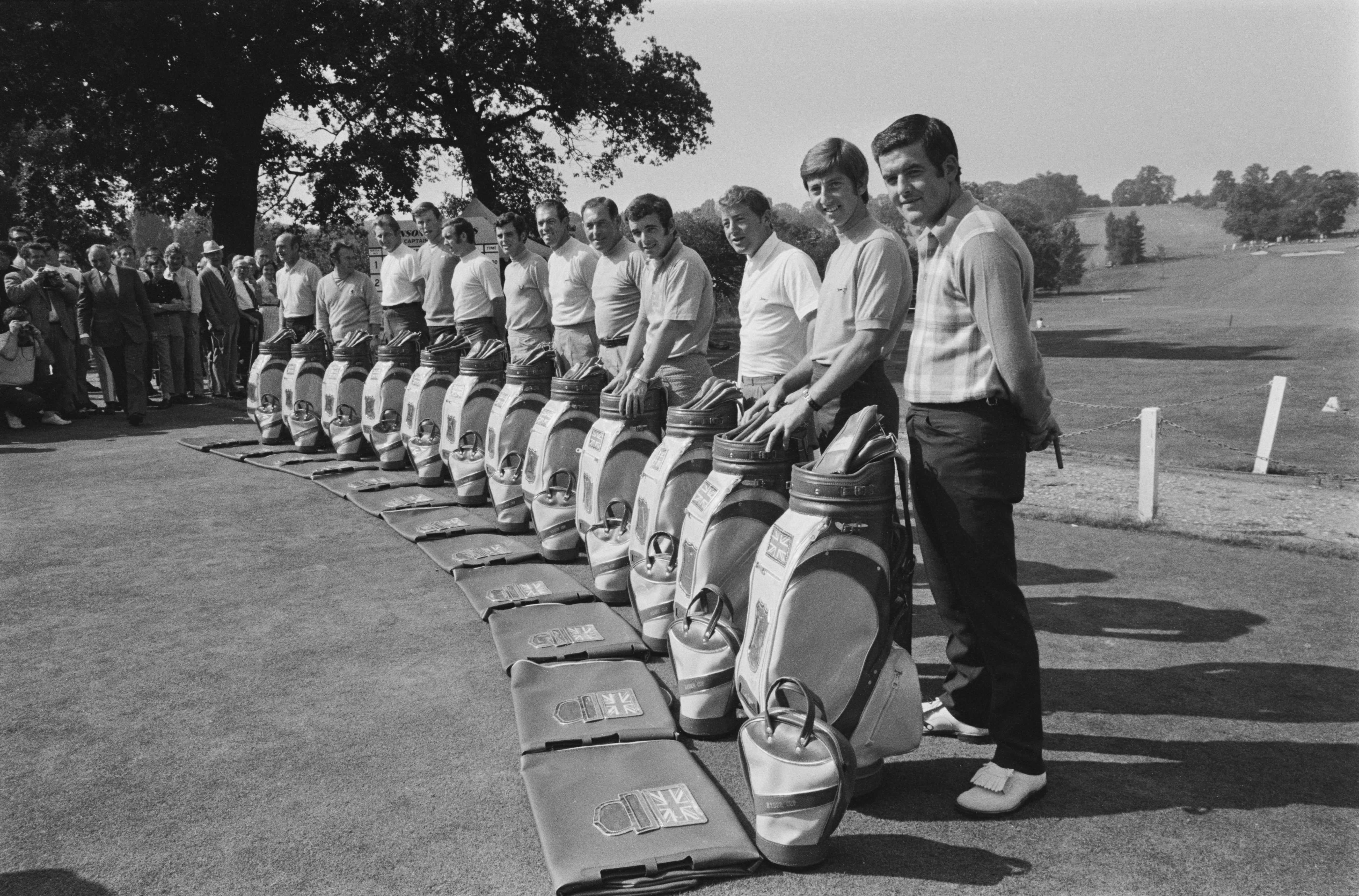Peter Oosterhuis: How a Ryder Cup stalwart became a much-loved commentator
Oosterhuis, who has died at the age of 75, twice finished runner-up at The Open before embarking on a successful career in golf media

Your support helps us to tell the story
This election is still a dead heat, according to most polls. In a fight with such wafer-thin margins, we need reporters on the ground talking to the people Trump and Harris are courting. Your support allows us to keep sending journalists to the story.
The Independent is trusted by 27 million Americans from across the entire political spectrum every month. Unlike many other quality news outlets, we choose not to lock you out of our reporting and analysis with paywalls. But quality journalism must still be paid for.
Help us keep bring these critical stories to light. Your support makes all the difference.
Peter Oosterhuis, who has died aged 75, was one of Europe’s top professional golfers who also became a much-loved commentator on the sport.
Oosterhuis, who topped the European Tour’s Order of Merit from 1971-1974 and twice finished runner-up at The Open, had been suffering from Alzheimer’s since 2014.
Born on 3 May, 1948 in London, Oosterhuis honed his skills at Dulwich and Sydenham Hill Golf Club after initially being allowed on to the course to pick blackberries to take home to his family.
It took the tall, well-built youngster just two years to get his handicap down to scratch and he enjoyed a successful amateur career, which included representing Great Britain and Ireland in the 1967 Walker Cup at Royal St George’s.
After turning professional the following year, Oosterhuis won two age-restricted events in 1970 and also enjoyed an eye-catching performance in The Open at St Andrews, the 22-year-old finishing in a tie for sixth place as Jack Nicklaus defeated Doug Sanders in a play-off.
Three victories in 1971 saw Oosterhuis finish top of the money list for the first of four consecutive seasons and he also made his PGA Tour debut in the Greater Greensboro Open, a week before playing in the Masters for the first time.

Two years later Oosterhuis found himself in prime position to win a coveted green jacket at Augusta National when a 68 in the weather-delayed third round gave him a three-shot lead with 18 holes to play.
The final round was played on Monday for the first time since 1961 and although Oosterhuis followed two pars with a birdie on the third, dropped shots on the fourth, seventh and 11th saw him relinquish the lead.
A birdie on the par-five 13th kept Oosterhuis in the frame but another bogey on the 15th proved costly and a closing 74 left him in a tie for third, two shots behind winner Tommy Aaron.
Oosterhuis also finished second in the 1974 Open at Royal Lytham, four shots behind Gary Player, and was runner-up again at Royal Troon in 1982 as Tom Watson lifted the Claret Jug for the fourth time.
And although all six of his consecutive Ryder Cup appearances ended in defeat – only the last two included European players – Oosterhuis enjoyed considerable personal success in the biennial competition against some of the biggest names on the United States’ team.

As well as victories over Johnny Miller, JC Snead and Gene Littler, Oosterhuis defeated Arnold Palmer in both 1971 and 1973, although it was his halved match with Lee Trevino at Muirfield in 1973 which provided the best story.
Speaking to Golf Digest in 2015, Oosterhuis recalled: “Lee told his team-mates, ‘If I don’t beat Oosterhuis, I’ll come in here and kiss your butts’. Lee didn’t beat me. We halved the match.
“When he walked in the locker room, (Jack) Nicklaus, Gay Brewer and the other players were waiting, slacks down around their ankles, for the pay-off. Lee didn’t keep his promise.”
Oosterhuis partnered Nick Faldo to two wins on the six-time major winner’s Ryder Cup debut in 1977, including a 3&1 success over Nicklaus and Raymond Floyd.
“I was speaking to Jack recently and reminded him of it. He said, ‘Really? You beat us? I don’t remember’. That’s the difference between Jack’s memory and mine; he gets to choose what he forgets,” Oosterhuis said, in reference to his diagnosis with early-onset Alzheimer’s in 2014.

The diagnosis came about because Oosterhuis had grown concerned about struggling to recall the facts and statistics he took pride in having at his disposal during his broadcasting career, which began in 1994 with Sky Sports and then the newly-formed Golf Channel, before he joined CBS in 1997.
Prior to 1994, Oosterhuis was the director of golf at Riviera Country Club in Los Angeles and he played a round with Tiger Woods before the teenage amateur competed on a sponsor’s exemption in the 1992 LA Open.
“He hit the ball a mile, he hit it high, and he knew what he was doing. He was the most confident 16-year-old I’d ever seen,” Oosterhuis recalled.
Given honorary life membership of the European Tour in 2016, Oosterhuis is survived by his second wife, Ruth Ann, his sons Rob and Rich, stepsons Byron and Matt and four grandchildren Peyton, Turner, Sutton and Lachlan.
Join our commenting forum
Join thought-provoking conversations, follow other Independent readers and see their replies
Comments